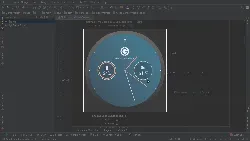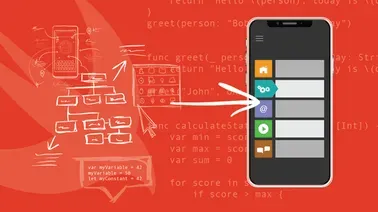
Introduction to iOS - Part 2

This iOS development course provides an introduction to Xcode and Swift, allowing users to create iOS apps with adaptive user interfaces, explore iOS app architecture, and more.▼
Course Feature
![]() Cost:
Cost:
Free Trial
![]() Provider:
Provider:
Pluralsight
![]() Certificate:
Certificate:
Paid Certification
![]() Language:
Language:
English
![]() Start Date:
Start Date:
On-Demand
Course Overview
❗The content presented here is sourced directly from Pluralsight platform. For comprehensive course details, including enrollment information, simply click on the 'Go to class' link on our website.
Updated in [April 29th, 2023]
This course, Introduction to iOS - Part 2, is designed to help students continue their journey into iOS development. Building on the knowledge gained in the first course, students will learn how to use Xcode and Swift to create iOS apps with adaptive user interfaces, explore iOS app architecture, and more.
The course will cover topics such as getting started, building single view applications, creating and configuring iOS tables, defining custom table cells, creating iOS apps with multiple screens, using auto layout and stack views, creating adaptive UI using traits and size classes, putting it all together, and finishing touches.
By the end of the course, students will have a better understanding of iOS development and be able to create their own iOS apps.
[Applications]
After completing this course, students should be able to apply their knowledge to create iOS apps with adaptive user interfaces, explore iOS app architecture, and deploy their applications to the app store. They should also be able to create iOS apps with multiple screens, use Auto Layout and Stack Views, and create adaptive UI using traits and size classes.
[Career Paths]
1. iOS Developer: iOS developers are responsible for developing applications for Apple’s mobile operating system. They use the Swift programming language and Xcode development environment to create apps for the iPhone, iPad, and Apple Watch. As the demand for mobile applications continues to grow, the demand for iOS developers is expected to increase as well.
2. Mobile App Designer: Mobile app designers are responsible for creating the look and feel of mobile applications. They use design tools such as Sketch and Adobe Photoshop to create user interfaces and user experiences that are both visually appealing and functional. As mobile applications become more popular, the demand for mobile app designers is expected to grow.
3. Mobile App Tester: Mobile app testers are responsible for testing mobile applications to ensure they are functioning properly and are free of bugs. They use a variety of testing tools and techniques to ensure the quality of the application before it is released to the public. As mobile applications become more complex, the demand for mobile app testers is expected to increase.
4. Mobile App Developer: Mobile app developers are responsible for developing mobile applications for a variety of platforms, including iOS, Android, and Windows. They use a variety of programming languages and development tools to create applications that are both functional and visually appealing. As the demand for mobile applications continues to grow, the demand for mobile app developers is expected to increase as well.
[Education Paths]
1. Bachelor of Science in Computer Science: This degree path focuses on the fundamentals of computer science, such as programming, software engineering, and computer architecture. It also covers topics such as artificial intelligence, data structures, and algorithms. With the increasing demand for mobile applications, this degree path is becoming increasingly popular and is a great way to gain the skills needed to develop iOS apps.
2. Bachelor of Science in Software Engineering: This degree path focuses on the development of software applications, including mobile applications. It covers topics such as software design, software development, and software testing. This degree path is ideal for those looking to develop iOS apps, as it provides the necessary skills to create and maintain mobile applications.
3. Master of Science in Computer Science: This degree path focuses on advanced topics in computer science, such as machine learning, artificial intelligence, and data science. It also covers topics such as software engineering, computer architecture, and software development. This degree path is ideal for those looking to develop more complex iOS apps, as it provides the necessary skills to create and maintain advanced mobile applications.
4. Master of Science in Software Engineering: This degree path focuses on the development of software applications, including mobile applications. It covers topics such as software design, software development, and software testing. This degree path is ideal for those looking to develop more complex iOS apps, as it provides the necessary skills to create and maintain advanced mobile applications.
Course Provider






